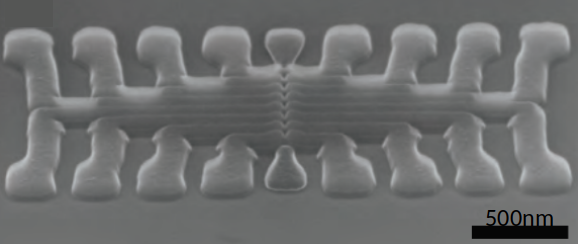My research involves developing an algorithm to automatically tune a 2xN array of quantum dots (QDs) that could be used as the building block for a fault tolerant quantum computer.
Quantum computing has the potential to revolutionise our daily lives, just like the transistor has changed the last 70 years or so, with classical computers.
Classical computers work by having multiple transistors that act as switches, which can store a single bit of information (1 if on and 0 if in the off state). In a quantum computer instead the information is stored in a qubit, in which the system can be in a superposition of both a 1 and a 0 at the same time. By taking advantage of these quantum properties, a quantum computer can theoretically be exponentially faster than our current classical computers for certain types of algorithms, in particular, for simulating quantum systems, solving optimisation problems and for machine learning. As a result, it could vastly speed-up technological and research advancement, just like the classical computer has.
We are currently in the infancy of this new technology, as many different viable platforms are being explored, each with its pros and cons. Large companies are also getting involved, such as Google and IBM with superconducting qubits, Microsoft with Majorana and Intel with silicon quantum dots (QDs), which is the platform I am working on. The idea is to slightly modify the current transistor, which is at the base of classical computers, to be able to trap single electrons when cooled down to -273C and by applying a voltage on our gate. This creates a quantum dot (QD), which behaves like an “artificial atom”, in which we can use its spin as the basis for our qubit.
However, to carry out an operation, these QDs need to be close enough to each other for them to interact. This adds the complication that applying a voltage on one QD will affect all the neighbouring ones, which might result in the electrons to move into a different configuration than the one desired. As a result, to change the electron population on one QD, a series of voltages will need to be applied to all the neighbouring ones, the amount of which will vary from device to device. As the technology scales up, it will become impossible to manually tune and keep track of all the required voltages. Hence, my research involves in looking into how to automatically tune such a hyper-dimentional voltage space by applying different data analysis and machine learning techniques.
NanoDTC Student, c2018

